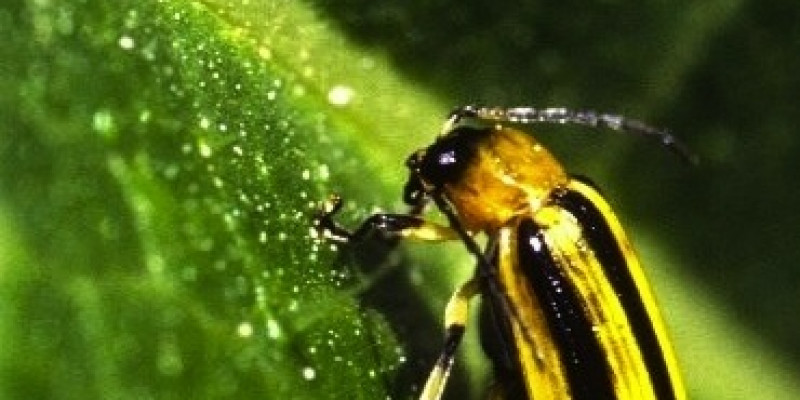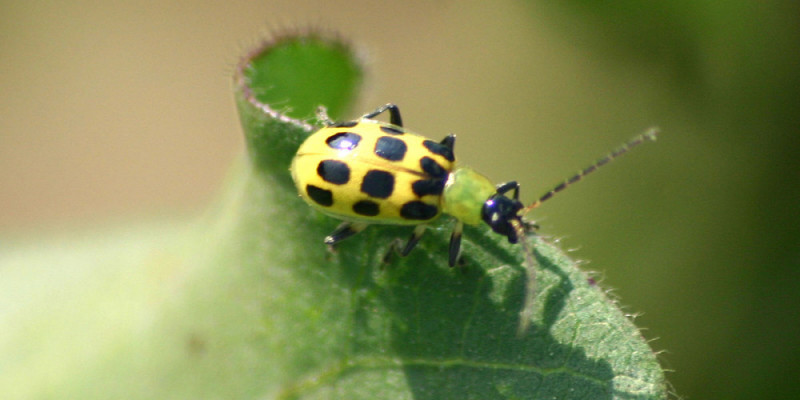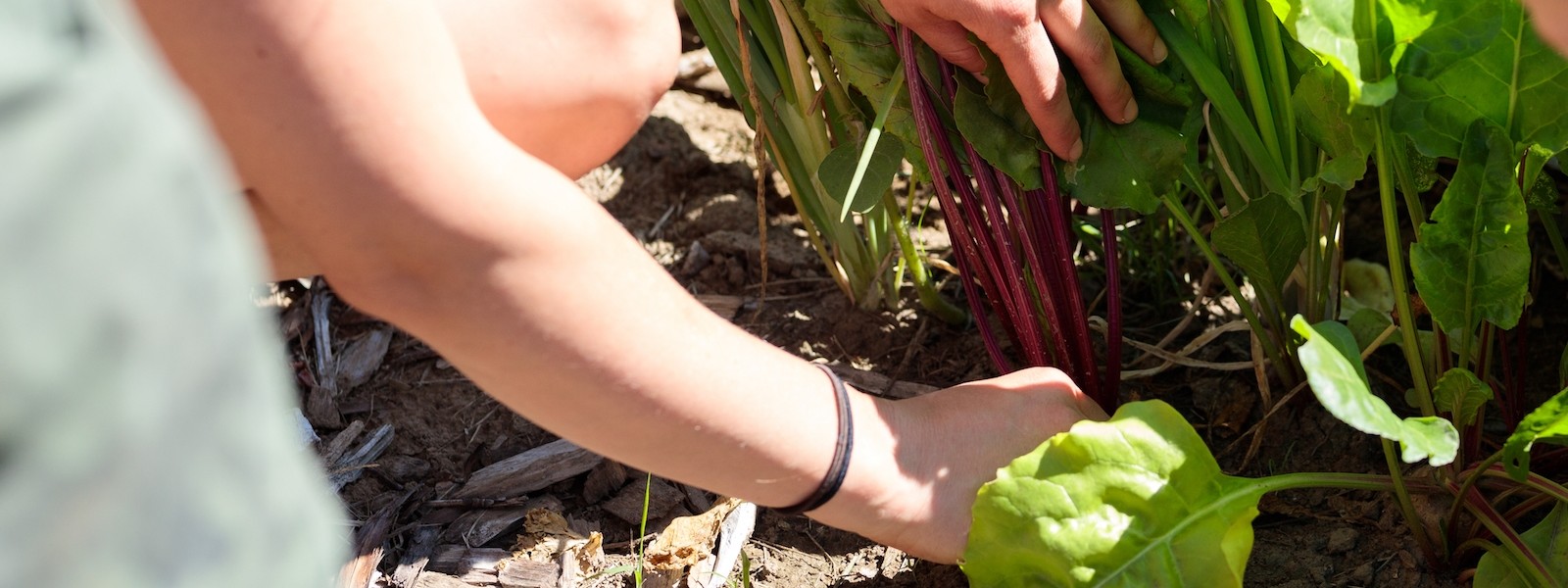Pest: Cucumber Beetles
Both common species of cucumber beetle, striped and spotted, measure about 1/4” long. Striped beetles are yellow with three wide black stripes. Spotted beetles are greenish-yellow with 11 black spots. All species over-winter as adults in garden debris or weedy areas.


Life Cycle
The beetles emerge in spring to mate and lay eggs in the soil or on plants. The larvae burrow into the ground and feed on plant roots for several weeks.
Plants They Attack
All members of the cucurbit family, including: cucumbers, melons, pumpkins, and squash. They also enjoy: beans, corn, beets, potatoes, tomatoes, asparagus, flowers, apricots and other soft fruits.
Spot The Damage
Adult cucumber beetles chew ragged holes in plant leaves, can consume entire blossoms and also feed on germinating seeds and newly planted seedlings. Cucumber beetles are the transmitters of deadly bacterial wilt and cucumber mosiac virus, so controlling the beetles is the key to preventing the spread of these pathogens.
Preventative Actions
- Choose cucurbit varieties known to be resistant to bacterial wilt and cucumber mosaic virus.
- Interplant susceptible crops with fragrant tansy, catnip or marigolds, said to deter adult beetles.
- Mulch newly planted seedlings with a loose material, like straw, as soon as they are planted- creating a barrier to females needing to come in contact with the soil to lay their eggs.
- Cover seedlings with a floating row cover. The cover will keep the beetles off. Lift the covers and check the plants often, squish any beetles, and look on the underside of the leaves for eggs and larvae, squish those too. Replace the Remay when you are done. The weight of the cloth will not effect growth at all. Remember to watch for flowers and remove the remay permanently then so that pollination can happen, or hand-pollinate cucurbits when necessary. If your baby plants can have a 3-4 weeks without the beetles chewing on them they will become strong enough to mostly withstand the beetle’s damage.
- Squish the beetles you find, or put them in soapy water.
- Plan to rotate your crops from year to year so you do not plant their favorite foods where they laid eggs in the soil last year.
Organic Product Controls
There are very few organic controls for hard shell beetles such as cucumber beetles. There are sprays that you can use but we do not recommend those for the home gardener because they are typically broad spectrum sprays which kill all insects, including those you may be trying to attract to your garden. We find that incorporating logical systems, such as using Reemay cloth (floating row covers) into the farm or garden plan is the most cost effective and environmentally friendly way to manage pests. If you must you a product, spinosad, neem or pyrethrin are the organic recommendations.
Sources
CCF staff
Good Bug, Bad Bug by Walliser 2008
The Organic Gardener’s Handbook by Ellis and Bradley 1996

